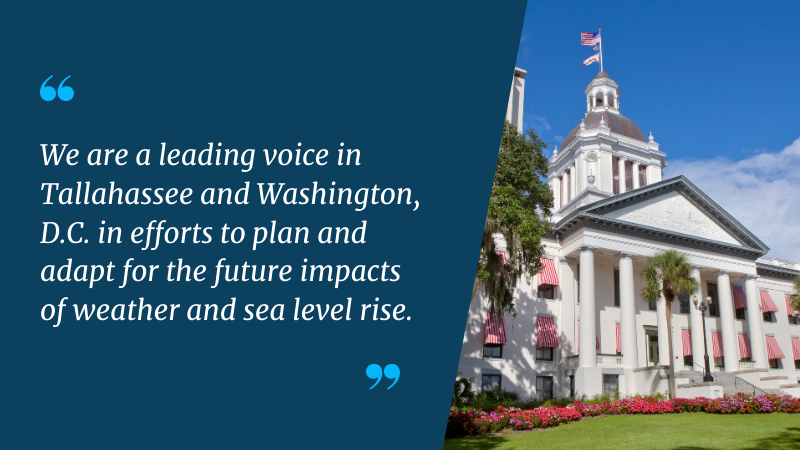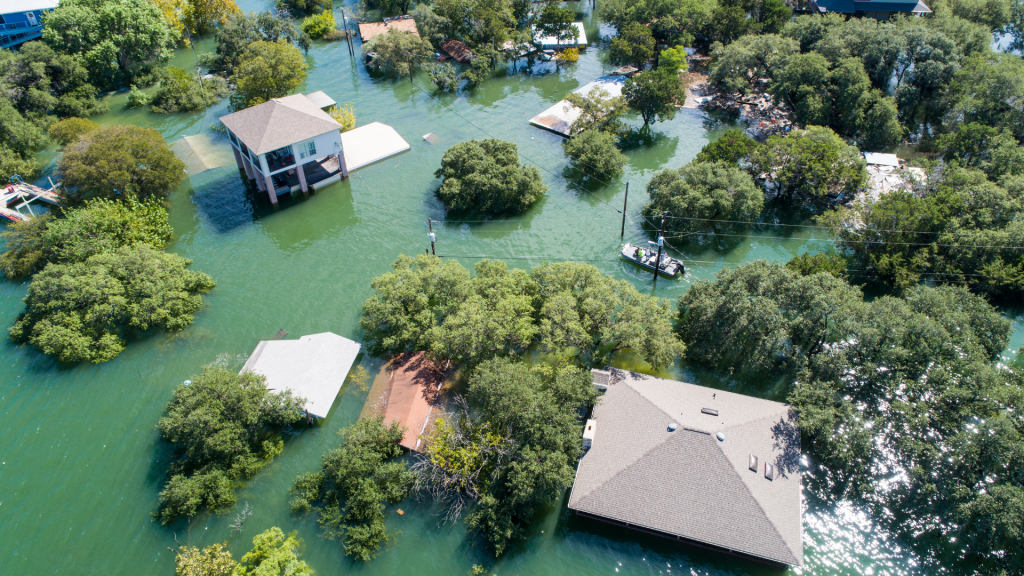
Our Story
Resiliency Florida is a leading voice in Florida assisting with regional planning and adaption for the impacts of extreme weather and sea level rise. All communities in Florida face resiliency challenges, whether coastal or inland, and our aim is to help them achieve the great benefits of resiliency planning.
We are a non-profit organization made up of public and private partners dedicated to promoting the development of state and regional strategies and action plans. We also strongly advocate for increased investment in critical infrastructure and habitat throughout Florida to mitigate the impacts of our changing climate.
Our Goal
The mission of Resiliency Florida is to act as a conduit for developing local government and private sector partnerships, to secure funding, and to gain legislative support for resiliency and adaptation strategies at both the state and federal levels. Through a diverse membership including; cities, counties and the private sector, Resiliency Florida promotes the exchange of ideas and resources. This exchange can help our communities become more prepared and resilient to face sea level rise, extreme weather, flooding and other challenges stemming from climate change. Our focus in these partnerships is the collaborative development of tools, projects, and funding.
Key Areas of Focus
Because resiliency efforts encompass broad and important issues, we have chosen to focus on key areas which, when addressed, can make the greatest impact.
Risk Assessments

The concept of risk assessment is not new to local government. Most municipalities and counties already have risk management systems in place and may even have designated staff dedicated to risk assessment and management.
Risk assessments can assist local governments in identifying and assessing the dangers that climate change poses to their assets, operations and services as well as to help prioritize certain risks that require further action which can assist them in their decision-making and adaptation planning.
Risk assessments aim to ensure that municipal systems develop holistic strategies for addressing the challenges of Climate Change.
Building Codes

Mitigating the effects of Climate Change is a growing threat that requires a community wide response through aggressive adaptation strategies, starting with revisions and updates to building and land development codes. With a focus on evaluating minimum building finish floor elevations (BFE). Starting with the 2010 edition, the Florida Building Code (FBC) includes flood provisions that are consistent with the NFIP requirements for buildings and structures. All counties, cities and towns are required to enforce the FBC. Many Florida communities enforce some “higher standards” than those required by the FBC.
Insurance

The National Flood Protection Insurance Program (NFIP) allows property owners in participating communities to buy insurance to protect against flood losses. Participating communities are required to establish management regulations that will reduce future flood damages. This insurance is intended to act as an insurance alternative to disaster assistance, reducing the rising costs of repairs to buildings and their contents caused by flooding.
Cities and Counties are encouraged to participate in the National Flood Insurance Program’s Community Rating System (CRS). Property owners could qualify for a flood insurance discounts of between 5% and 45% if the property is in the Special Flood Hazard Area. Communities that participate in the CRS program may also have elevation certificates on file for individual homes or businesses.
Financing

Specific financing instruments could be designed to create diversified, scaled pools for investment.
The instruments could each be tailored to a targeted class of measures that share a similar risk-reward profile. The instruments might take the form of portfolio-based loans, catastrophe bonds, re-insurance, securitization, or other structured finance instruments. In this way, much larger private capital flows could be sourced for adaptation and other kinds of disaster risk reduction. To lead this kind of financial innovation and the development of such an investment market for resilience measures the report proposes that international adaptation funds, or similar national-level funds or programs, could be very effectively leveraged by focusing on three areas. These are:
- Funding for local, national, and international initiatives to ‘mainstream’ new resilience standards into conventional urban development projects, much as recent ‘green building’ standards have been mainstreamed into urban development and construction over the last decade.
- Funding for local planning and project preparation, including financial structuring for comprehensive resilience upgrading projects in known highly vulnerable urban areas and systems.
- Funding for financial product innovation for creating scalable private investment flows into global resilience upgrading.
